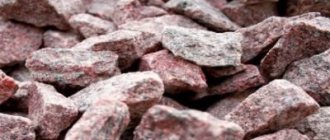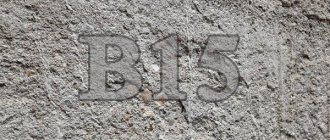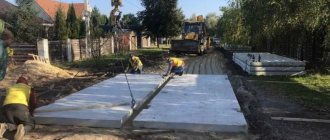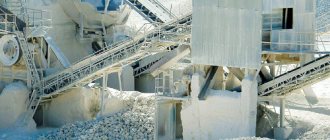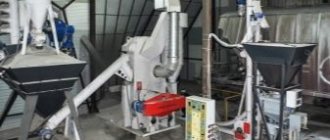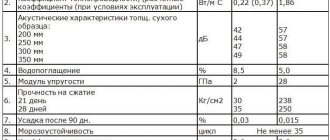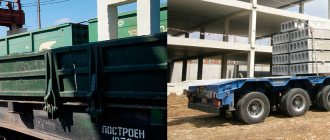Washed
It is mined from the bottom of rivers. The grains of sand are smooth, uniform, medium in size, and yellow or gray in color. The chemical formula is SiO2, the composition includes silicon and iron oxides. There are no impurities, clay particles or pebbles in it, because washing occurs naturally.
Coarse grain
This species is much less common and has an unobtrusive, neutral color. Its value and cost are higher than washed ones. Coarse sand is mined from dry river beds. It is perfect for finishing, design, masonry work, and design of personal plots. This type is also part of the mixture that covers roads and is used in the production of bricks.
Large
It is mined by splitting rocks using special crushing and grinding equipment. It differs in size from river coarse-grained one - it can reach 5 mm.
Classification
So, according to the place of origin, sand is usually classified into the following types:
river sand
River sand is mined from the bottom of rivers. It is characterized by natural purity and good water-permeability qualities. The size of sand grains in river sand ranges from 0.3 to 0.5 mm.
This type is used for the preparation of concrete solutions, cement screeds, treatment filters, and drainage structures. It is worth noting that when preparing a concrete mixture, this type of sand quickly settles, so the solution must be constantly stirred. The cost of river sand ranges from 600 to 800 rubles per 1 m3.
Quarry sand
Quite logically, quarry sand is mined using the open-pit method and includes impurities in its composition: dust particles, stones. Sand grains of quarry sand are much smaller than those of river sand, their sizes range from 0.6 to 3.2 mm.
In its original unprocessed form, the building material can be used to construct trenches or as a foundation foundation. Typically, leading manufacturers wash and screen quarry sand. In this case, it can be used when performing plastering and finishing work, to create an asphalt concrete mixture, and to form a screed.
Sea sand
This non-metallic mineral is extracted from the seabed using hydraulic projectiles. There are practically no foreign impurities in it, and salt is involved in purification.
This type of sand is considered the most popular. It is used everywhere, from the creation of concrete structures to the formation of finely dispersed dry mixtures. But, despite the unique characteristics of this building material, there is a shortage of it, since it cannot be mass produced.
Sometimes construction sand is considered a separate type. But, as a rule, it means both river and quarry sand. River sand can be of two colors - yellow and gray, and quarry sand - brown and yellow.
But it turns out that in nature there is also black sand that shines like metal. It can be found in different parts of the world. This type of sand is formed as a result of geological processes.
This mineral consists of dark-colored heavy minerals and is formed by washing out the light components. The main minerals are magnetite, ilmenite, hematite.
Such sands are characterized by high radioactivity - 50-300 microroentgens per hour, but sometimes this parameter can reach a thousand microroentgens per hour. Due to its high radioactivity, this mineral is not used in construction and economic activities.
Artificial sand
It is worth noting that the above types of sand are natural, as they were formed by the natural destruction of rocks. But there is also artificial sand on the market, created by crushing marble, limestone, and granite.
The most popular among artificial types of sand is quartz. It is made by grinding and dispersing the white quartz mineral to obtain a homogeneous fraction. It differs from natural types of sand in that it does not contain impurities and has a homogeneous composition. These advantages allow you to accurately calculate the parameters of a structure made on quartz sand.
It has found its application in the creation of decorative and finishing materials, welding materials. It is also used in the production of concrete, but quite rarely.
How to ignite
The characteristic features of calcined are chemical inertness and “zero” humidity. From these properties follows the scope of application - construction, abrasive (sandblasting) processing of metals and other materials. Calcined sand is ideal for working in winter (for laying paving slabs), because there is nothing there to freeze.
It is calcined in electric or other ovens at different temperatures. For example, 150 - 200°C is enough for dehydration, which can be achieved at home - on the stove, in the oven. However, the release of the mineral from carbonate rocks (lime, magnesite) is possible when the temperature rises to 700 – 800°C. In this case, the impurities are “burnt”, becoming inert to chemical influences. Check the purity of the product by pouring vinegar over it and listening to the “hissing” of the carbonates. Read about the density of marble and the formula for the strength of marble chips here.
Requirements
Coarse sand has many characteristics. When using a material in a particular industry, a set of qualities is required that must meet certain requirements. Therefore, the following state standards have been developed.
GOST 8736-93
This standard corresponds to a substance predominantly with large grains with a rough surface. This sand has high frost-resistant properties. The grain size is not lower than 2.6 fineness module. The presence of impurities up to 9% is allowed. The substance is gray in color.
The material is intended for work in heavy industry. It can be used to fill concrete. In road construction, such sand can be part of asphalt and other bulk substances. Use in monolithic production is also permitted.
GOST 22856-89
This standard corresponds to a granular substance that has large and small grains with a smooth surface. Such material is obtained by crushing natural rocks or from river channels. The substance is characterized by high quality. Grain sizes vary from 2.2 to 3 fineness modules. The presence of impurities of 0.5% is allowed. The substance may have shades of golden, yellow, or gray.
Sand of this quality is used as a constituent element of brick, plaster and other components used in construction or decoration. However, during operation it is necessary to constantly stir the mixture, since smooth particles quickly settle to the bottom.
Advantages and disadvantages
River sand has no disadvantages, except for the high cost of this natural material.
But there are a lot of positive qualities:
- ecologically pure;
- not afraid of exposure to aggressive components;
- has high moisture resistance;
- it is an excellent soundproofing material;
- sand does not rot;
- meets high technical and aesthetic requirements.
The list of its advantages can be endless, so users give this natural material the highest ratings.
Classification
The varieties of quartz sand determine its purpose. Depending on the shape of the sand grains and their size, granite sand is used to make various products for household or industrial purposes. In addition, the classification of material is divided according to a number of characteristics.
By location
Pure quartz mineral is mined from natural deposits that are found not only in Russia, but also in other countries. Fractions of fine grains of sand are obtained through the natural disintegration of large parts of granite rock. In our country, such deposits are found in the Urals, in the Kaluga region, the Volgograd and Bryansk deposits, and even in the Moscow region. In addition, quartz sand is found in the floodplains of the Ural rivers and on the seabed.
Depending on the place of extraction, mineral material is divided into types:
- mountainous – the deposit is located in the mountains, the grains of sand have sharp edges and roughness;
- river - the purest, does not contain foreign impurities;
- marine - the composition may include clay admixtures and silty clastic components;
- gully – the sharp-angled edges of the sand grains are rough, and the total mass of sand contains silt components;
- soil - lies under a layer of soil and clay structures, has a rough surface.
By extraction method
Quartz sand is mined using different methods; in addition to mining, there is also enrichment. Enriched quartz sand is thoroughly cleaned of clay impurities and gravel elements are added. The fraction of such material reaches 3 mm. Quartz in the natural environment is obtained in various ways and, depending on its origin, it is divided into 2 types.
Primary - formed due to the natural destruction of granite and is located under a layer of soil or clay. Such decomposed material lies in one place for a long time without the participation of water, oxygen and ultraviolet rays in the process. Sand is extracted by quarrying, after which the material is transported by transport routes for further processing, where clay deposits and then moisture are removed by dissolving in water. Dry sand is distributed into fractions and packaged.
All quartz sand is divided into natural and artificial. Natural sand under the influence of water has round particles, and artificial sand is obtained by crushing rock using an explosion, after which the sharp small fragments are divided into size fractions.
By grain size and shape
Based on the size of the sand fraction, it is also divided into different types:
- dusty - the finest sand, which has a size of less than 0.1 mm;
- fine – the size of sand grains is from 0.1 to 0.25 mm;
- medium – sand particle size varies from 0.25 to 0.5 mm;
- large – particles reach from 1-2 to 3 mm.
By color
Natural granite quartz is transparent or pure white. In the presence of impurities, quartz sand can be colored in shades ranging from yellow to brown. Often, quartz bulk material can also be seen as a painted form - this is a decorative option that is used for design purposes. Colored quartz can be painted in any desired color: black, blue, cyan, red, bright yellow and others.
Density indicator
It determines the quality of this material, and depends on the moisture and porosity it has. For house construction work, the density of sand is not particularly important and its average value is taken for calculations. And in the production sector, the calculation of density is interconnected with the strength and service life of the buildings being built.
This indicator is also taken as the basis for determining the total amount of bulk building materials.
It varies depending on the moisture content of this substance. If the moisture content increases, water moves into the voids between the grains of sand, filling them. Thus, the bulk density indicator increases upward.
The greatest loosening of sand occurs at a humidity of 4-7%. Bulk density in this case will decrease by 10-40%. Density is controlled using special instruments - density meters or penetrometers, humidity - moisture meters. The average density of sand is considered to be 1.3 t/m3.
Density
The true specific gravity of sand is not commonly used. It is calculated by laboratory assistants at special institutions.
Thus, the density of river sand (kg per m3) ranges from 1.5 t/m3 to 1.45 t/m3. It is taken into account when dosing for preparing concrete mixtures (volume determination). The specific gravity of river sand is 2.65 g/cm3.
To find out the mass, use the following formula: m=V∙ p (m – mass, V – volume, p – density). Let's find out its quantity in 20 m3: m = 20∙1.3 = 26 tons (1.3 is the average density coefficient).
When preparing a solution, you should always be aware that at low density, voidage increases. Therefore, it is necessary to double the amount of binding materials. Increasing the consumption of binders is not beneficial for construction, because it increases waste and, consequently, the cost of concrete.
Ultimately, all this is reflected in the cost recovery, which is very important for construction enterprises and firms. For household use, such an increase in price does not play a significant role, because the scale of work is much smaller
As mentioned above, the higher the humidity, the lower the density. Moreover, its decline continues until it reaches 10%. Then the density begins to increase due to an increase in the volume of the liquid. Changing this parameter affects the quality of concrete.
You can calculate the density of sand yourself. They do it this way: sand is poured into a ten-liter bucket from a height of 10 cm. The container is filled heaped full. Then it is cut so that the end result is a guaranteed smooth surface.
The remaining amount of sand in the bucket is weighed, then the density is calculated: the kilograms received are converted into tons and divided by 0.01 m3. To clarify the result, it is good to repeat this procedure twice. The data obtained is then summed and divided by two.
You can independently determine emptiness. A sand sample should be poured into a liter container and weighed.
By the way, the measured values can be converted into the required values.
Grain composition
This indicator directly affects the value of the particle size modulus. Consecutive sifting of the source material allows you to distribute the entire mass in accordance with the indicators of the total residue and the content of grains of various sizes.
Total residues on sieves:
- 2.5 mm
- 1.25 mm
- 0.63 mm
- 0.315 mm
- 0.16 mm
- less than 0.16 mm
They are calculated as a percentage. GOST sets the value for the sieve residue to 0.63 mm. It is different for each group of sand in accordance with the fineness modulus.
In the material from our region, the grain composition indicators are as follows:
- 2.5mm: 4.0-7.6%
- 1.25 mm: 15.0-23.1%
- 0.63 mm: 40.0-47.4%
- 0.315 mm: 83.0-86.3%
- 0.16 mm: 95.3-97.0%
- less than 0.16 mm: less than 3%
The values of all categories are summed up and the average is calculated, which is the size module.
Grain size content category:
- More than 10 mm
- More than 5 mm
- Less than 0.16mm
It allows you to sift out large grains and dust particles at the first stage. This makes the process of fractionation easier.
The sand in our region contains the following amount of grain size:
- More than 10 mm – 0-4.8%
- More than 5 mm – 0-5.1%
- Less than 0.16 mm – 1.3-9.1%
The fact that these values do not exceed 10% indicates the high quality of the material.
Features of the main types of sand
Sand, the GOST of which was mentioned in the article, is classified according to the processing performed and its origin. For example, river sand is extracted from river beds; it is characterized by a high degree of purification and the absence of stones, clay impurities and foreign inclusions. Washed quarry sand is mined in a quarry using the washing method, as a result of which dust and clay particles are removed from it.
Seeded quarry sand is mined in a quarry and cleaned of stones and large inclusions. It is widely used in the manufacture of mortars for foundation work, masonry and the preparation of plaster. Quarry seeded sand quite often becomes the basis of asphalt concrete mixtures.
Construction sand is an inorganic bulk material that is formed by the natural destruction of rocks. Artificial heavy sand is a loose mixture that is obtained by crushing rocks according to the following type:
- limestones;
- granite;
- marble;
- slag.
The shape of the grains is acute, and the surface is rough. This material is used as a filler and when carrying out plastering work, when there is a need to achieve the effect of a noticeable texture of the covering layer.
Artificial sands can become part of any layer of plaster, the fractionation may be different, which depends on the solution and the requirements of the project.
Artificial sand is made from coal slag, and burnt coal is recycled. As a result, the material has a low sulfur content, which determines the quality of the coating layer. When carrying out decorative plaster using artificial sand, crushed stone, powder and crumbs of this rock can be used together with it to save money.
Size module
The state standard establishes seven groups of sand in accordance with the fineness module.
It happens:
- Increased fineness – 3.0-3.5
- Large – 2.5-3.0
- Average – 2.0-2.5
- Small – 1.5-2.0
- Very fine – 1.0-1.5
- Thin – 0.7-1.0
- Very thin - less than 0.7
The indicator itself is calculated by sequential sifting of samples. As a result, the entire test mass is divided into fractions; their ratio is calculated, summed up, and the average value is obtained. This is the module.
The following categories of sand are mined in our region:
- Medium, the particle size module of which is 2.1-2.4
- Fine, with a particle size module of 1.97
The area of application of the material depends on the value of the module. For example, fine river sand is used in plaster mortar, and medium sand is used in masonry mortar.
